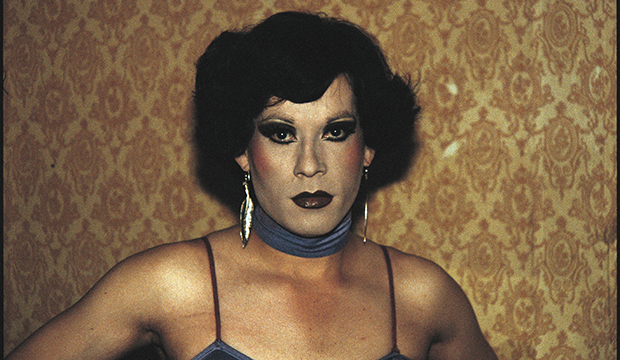
These are the denizens of 'outsider' life. Unapologetic, raw, and visually compelling, Another Kind of Life, featuring more than 300 works from 1950 to the present day, addresses society's fraught and complex relationship with 'non-conforming people'. The result is breath-taking.

Paz Errázuriz. From the series La Manzana de Adán (Adam’s Apple), 1983
By adopting multiple identities, the objective observer, voyeuristic outsider, or complicit insider, for example, the photographers penetrate the worlds of their sitters. Spending time with them over a period of months, or in some, cases years, the artists depict their subjects with an unparalleled level of empathy; their unadulterated, ruthless images roll out like a fascinating visual diary. Employing a diverse range of aesthetic strategies, from portraiture to documentary photography, this photographic collective immortalises the pain, horror, shame and fear of living on the margins.
From Dayanita Singh’s photo book depicting her 30-year friendship with Mona Ahmed, a eunuch from New Delhi to Diane Arbus' photographs spotlighting the 'abused, abandoned, invisible worlds' of 1960s circuses, the curation spans continents, landscapes and cultures.
Daido Moriyama's seminal work, Japan Photo Theatre, 1968, which documents street-life in Tokyo at a time when the city was witnessing political unrest during the American occupation, is truly spell-binding. His black-and-white grainy, out-of-focus images home in on the minorities loitering in the back-streets, night-clubs and brothels of the city. Cross-dressing geishas, nude prostitutes and hulking, dwarf men glare at you from up high. Spotlit, and dressed to perform, Moriyama's personae serve as a metaphor 'of theatre-as-life, and life-as-theatre'.

Philippe Chancel, Untitled 1982, from the series Rebel's Paris
Other highlights include works by Russian photographer Igor Palmin. His pictures The Enchanted Wanderer, 1977, and The Disquiet, 1977, depict little-seen-before Soviet Hippies; their bell-bottoms and flowers contrast with the post-industrial landscape they are pictured in.
Elsewhere, Chris Steele-Perkins captures the lives of the Teddy Boys, self-fashioned Edwardian dandies who emerged from the post-war gloom in 1970s Britain, and Teresa Margolles exposes the harsh realities of trans-gender sex workers in Ciudad Juarez, Mexico. Posing in the rubble of destroyed night-clubs, against a bright blue sky, they smile; the grim and sordid nature of the only job they can get ismomentarily forgotten, glossed over with a metaphorical varnish.
It's a challenging visual experience, but an evocative and thought-provoking one, too.
To note: Parental guidance advised, and children 14 and under must be accompanied by an adult at all times.
| What | Another Kind of Life, Barbican, review |
| Where | Barbican Centre, Silk Street, London, EC2Y 8DS | MAP |
| Nearest tube | Barbican (underground) |
| When |
28 Feb 18 – 27 May 18, Last entry 5.30pm |
| Price | £13.50 |
| Website | Click here for more information and tickets |






